Japan 2019 – Part 1
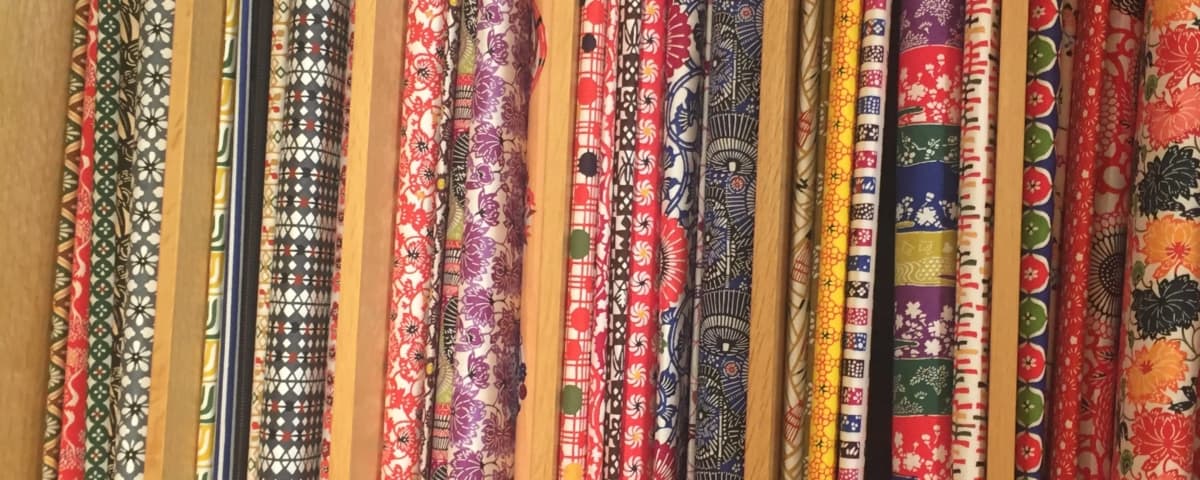
My husband Ted and I took a two-week trip to Japan in late November/early December 2019. The main reason was to visit our son, a junior in college at DePaul University in Chicago, who is doing a semester abroad at Kansai Gaidai University in Osaka.
I waited 30 years for this adventure, and it was definitely worth the wait! I was living in NYC back then, working odd jobs and trying to find something I was passionate about. My father was in Japan for the summer, and my mother took me with her on a short vacation to see him and tour around a bit. I already had an interest in paper, but that trip was a turning point: we stayed in a traditional inn in Kyoto (a ryokan) and being surrounded by light filtering through shoji screens sparked a new interest in paper and light.
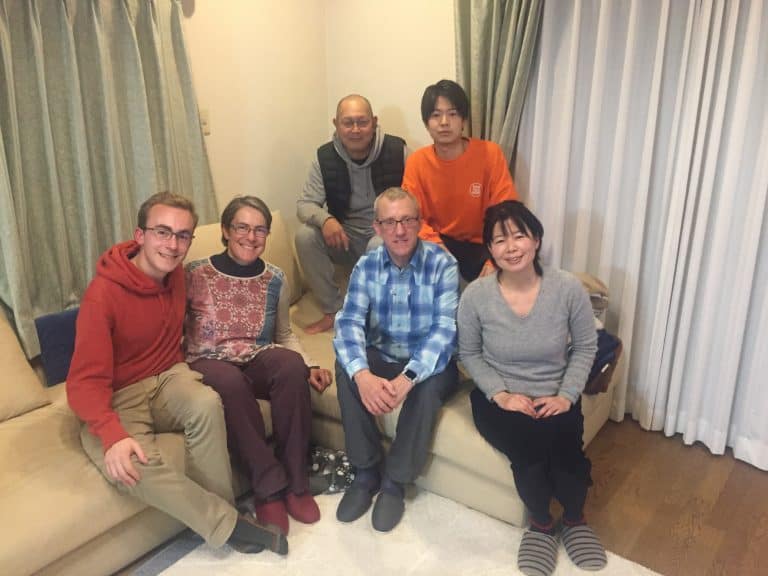
I reached out to several paper colleagues in advance of the trip, but we didn’t do much planning otherwise. I did purchase Julie Auzillon’s two paper guides: Japan Paper Tour and Kyoto Paper Tour. We got 7-day Japan rail passes to get us to Kyoto, and to and from Hiroshima and Echizen.
––––––––––––––––––––––––––––––––––––––––––––––––––––––––––––––––––––––––
Saturday 11/23: We flew from Denver to Vancouver to Tokyo and saw paper dresses on display in Vancouver – a good omen!
––––––––––––––––––––––––––––––––––––––––––––––––––––––––––––––––––––––––
Sunday 11/24: Arrived in Tokyo around 5pm and took the Narita Express train to a station where we rendezvous’d with Willam. Took subways to our airbnb in Nishiogikita, a nice little bright place right on the subway line. Note: the washing machines are often located on the balcony! We discovered this after-the-fact, when our host showed us the washing machine at our next airbnb in Kyoto.
Monday, 11/25: One of the people I reached out to prior to the trip was Tomomi Honzawa, who attended my 2018 Red Cliff Paper Retreat. Tomomi offered to show me around Tokyo, and she picked me up and took me to her lovely old Japanese home filled with shoji screens, wooden features and sliding door panels (fusuma). Since it is normal to sit on the floor in Japan, there were these little windows built into the sliding shoji panels that are at eye level when sitting. Tomomi called these “see snow falling windows.” It wasn’t snowing, but I could imagine sitting there quietly watching the snow fall.

Tomomi makes work using pre-made pulp and a variety of alternative casting techniques (no sheet forming). She mixes in some shredded dry hemp that I wasn’t familiar with. It looks like whispy one-inch long fibers, and she adds it to her pulp for strength.
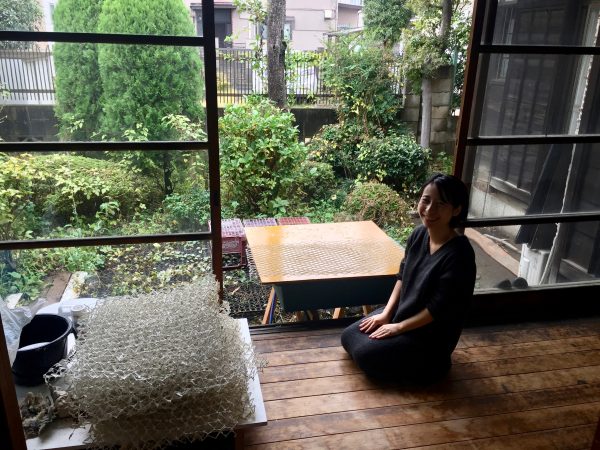
Here’s a video documenting Tomomi’s recent exhibition called The Histories of The Self at the Pola Museum of Art.
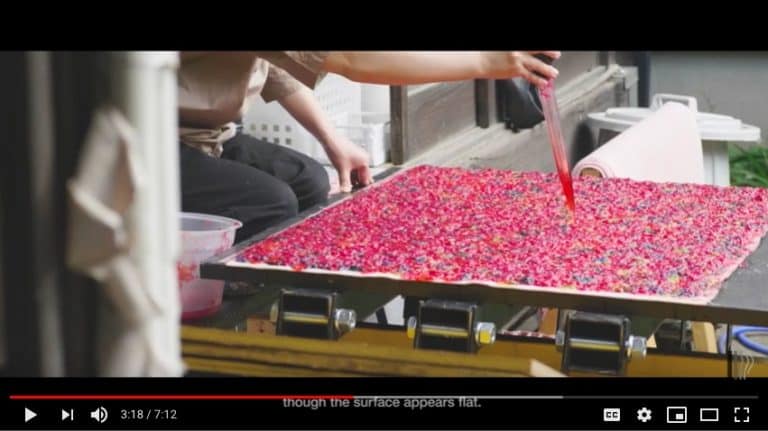
Tomomi took me on a paper tour of Tokyo. We started at Itoya, a 10+ floor department store dedicated to paper. Each floor has a focus, such as travel, craft, fine paper… there was even a special room where you could have a custom notebook made. They had some really slick paper displays.
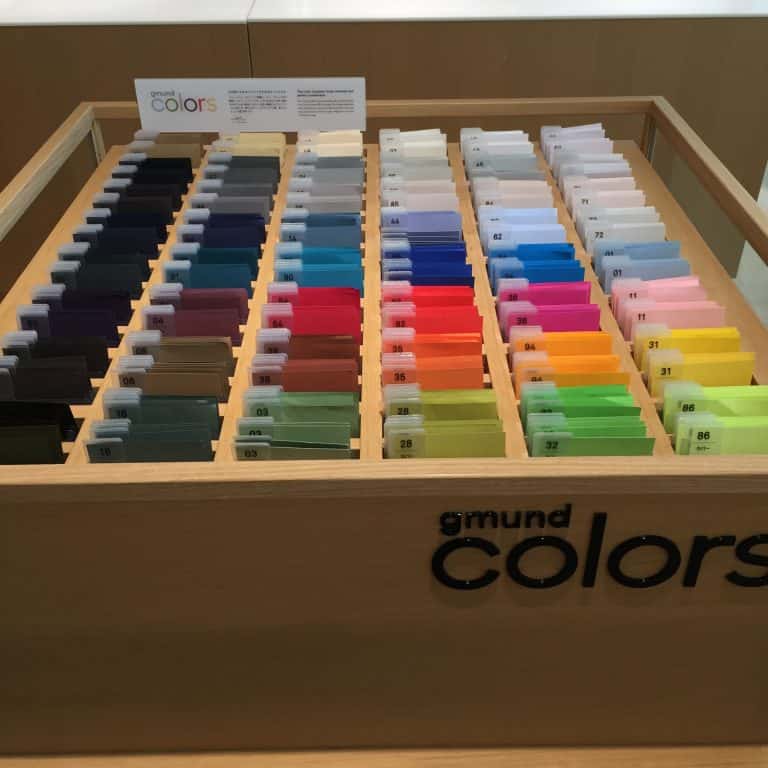
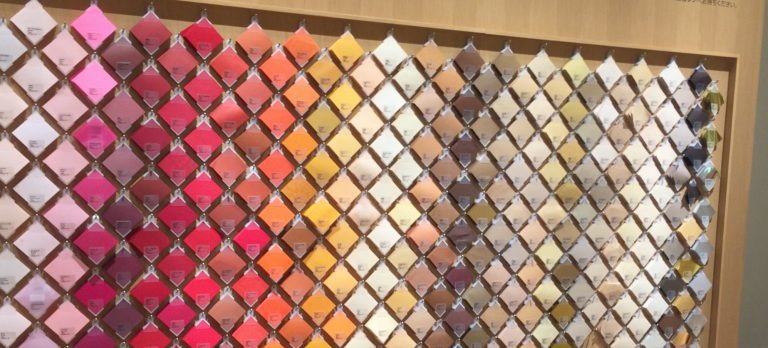
I bought paper of course, but was a bit hesitant since this was my first shopping day! I’ve been loving kyoseishi (crumpled momigami paper) recently, and it was quite reasonably priced (about $5/sheet)! I also purchased a book cover made of a paper-like substrate by a company called Siwa (they make lots of products: bags, hats, etc). I purchased other papers too, which I’ve forgotten about and will enjoy unpacking soon. People told me to bring a tube with me to Japan for carrying paper home. This was a novel idea, but not practical for traveling there. But I found that all paper shops sell tubes for a couple of bucks. I did bring a large duffle bag to carry home purchases, and the purchased tube + paper fit inside of that.

We had udon for lunch, where they had these contemporary paper lights, and then we were off to Ozu Washi, a store that specializes in handmade papers from around the world (mostly Asia).
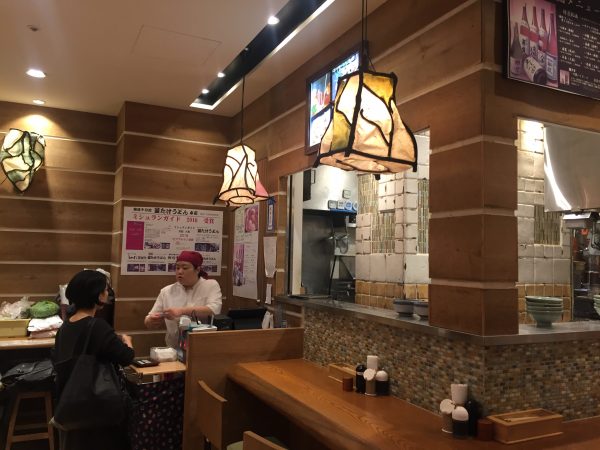
They have a Japanese papermaking demonstration room at the store.
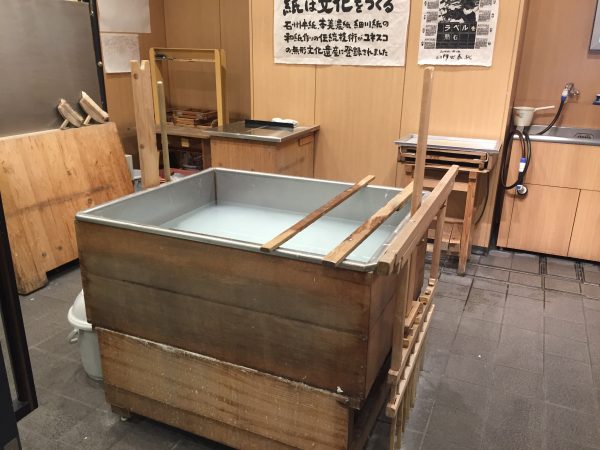
And you purchase paper by the sheet at these shops. They are either neatly displayed in drawers.
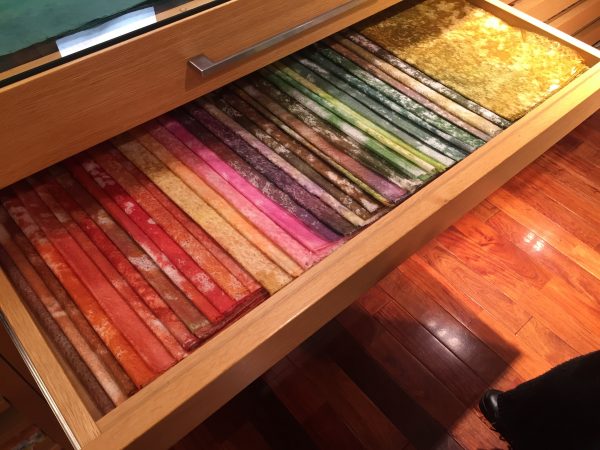
Or on bolts like fabric, which you take to the counter and they pull a sheet (or more) off for you.
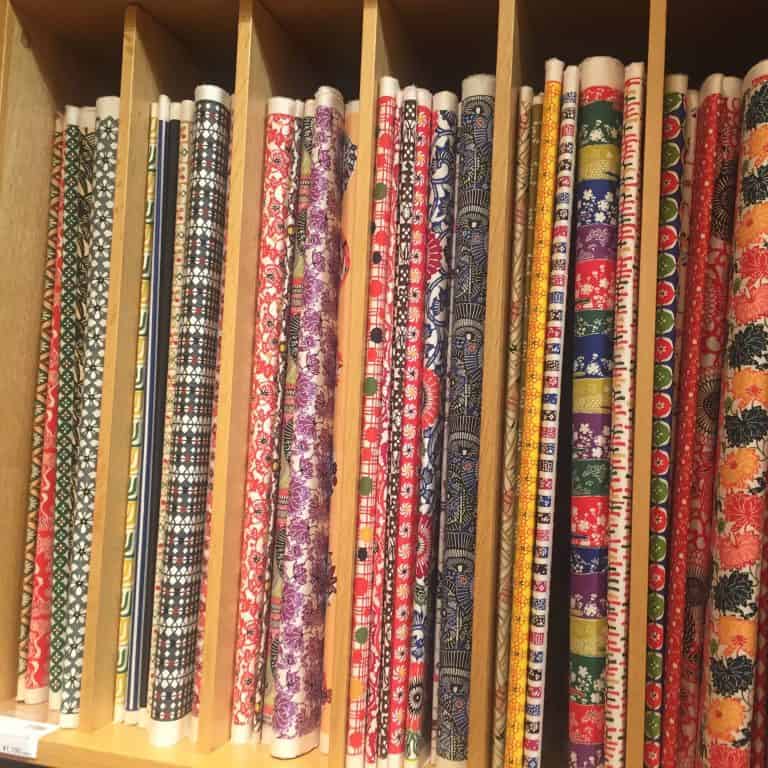
We went to a dye shop where I purchased some kakishibu and some powdered pigments. They had some amazing persimmon paper stencils. I should have purchased one, but restrained myself (darn)! One of them had tons of tiny dots punched in it, and my amazement led the proprietor to show me these hole punch tools, similar to the Japanese hole punch, but just one size per tool.
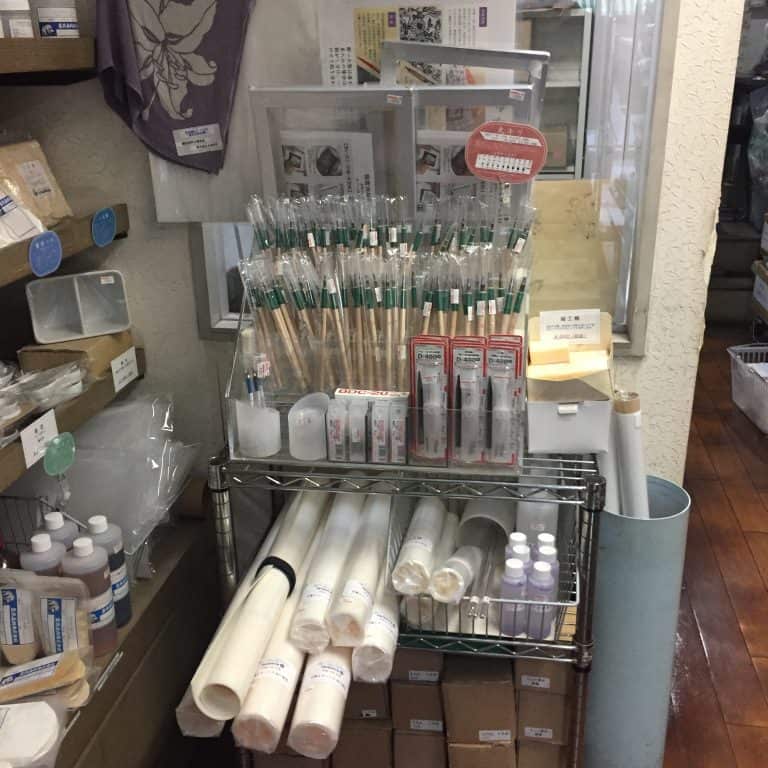
Will and Ted spent the day visiting temples, and I met up with them for dinner near Tokyo University with Jie Qi, a paper engineer/visiting professor whom I know through the Movable Book Society.
––––––––––––––––––––––––––––––––––––––––––––––––––––––––––––––––––––––––
Tuesday, 11/26: Will took us on a grand tour of shrines and temples. He has a book that he gets calligraphed at each place. We walked so much!

It was a rainy day, but the fall colors were out – those maple leaves glow in any light.
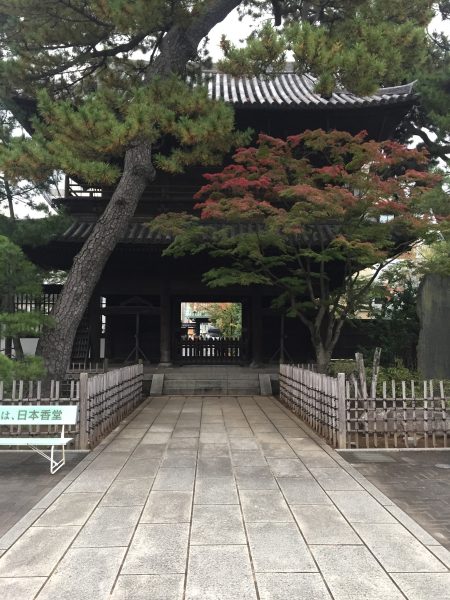

Paper offerings are a common site.
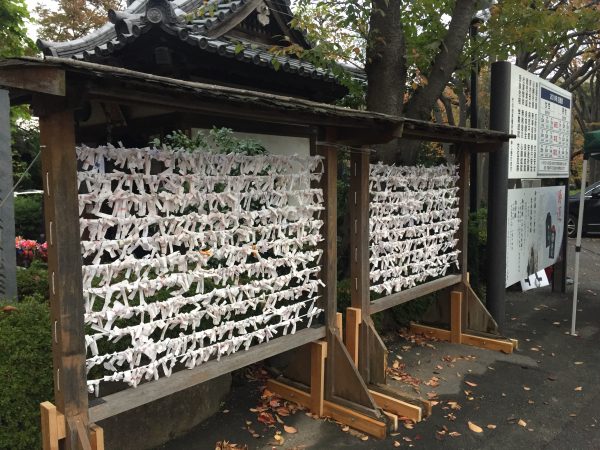
We summited two towers (in elevators): Tokyo Tower and Skytree.
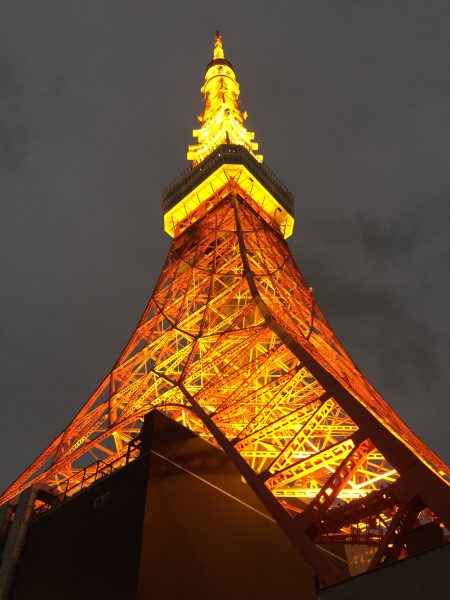
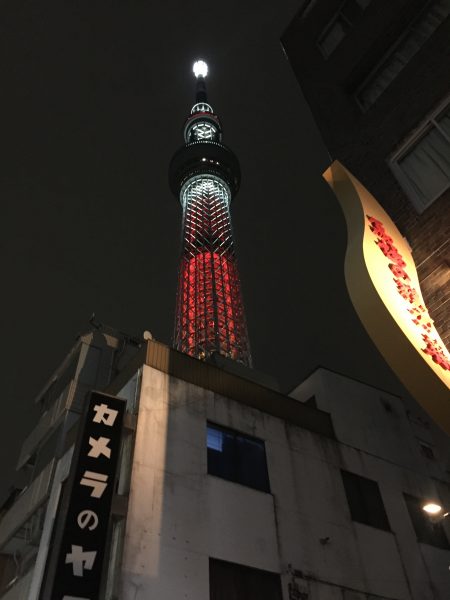
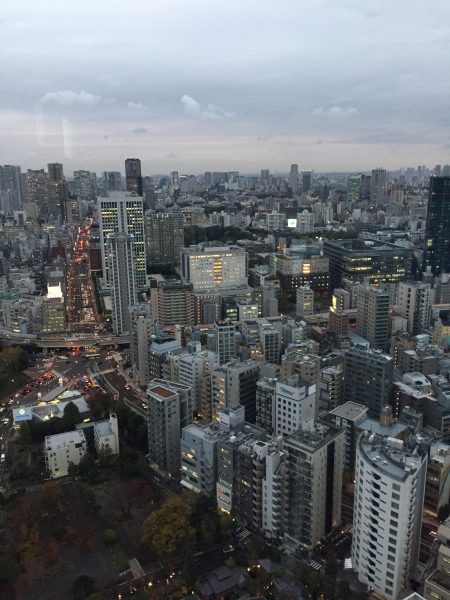
––––––––––––––––––––––––––––––––––––––––––––––––––––––––––––––––––––––––
Wednesday, 11/27: I got an e-mail right after we booked our flight to Japan from Mardy Widman, someone I know through the Oregon College of Art & Craft. She was going to be in Japan when were were, so we arranged to meet. She was staying with Maki Yamashita and Paul Denhoed (Maki studied at OCAC, and I know Paul from Kate’s Paperie in NYC years ago).
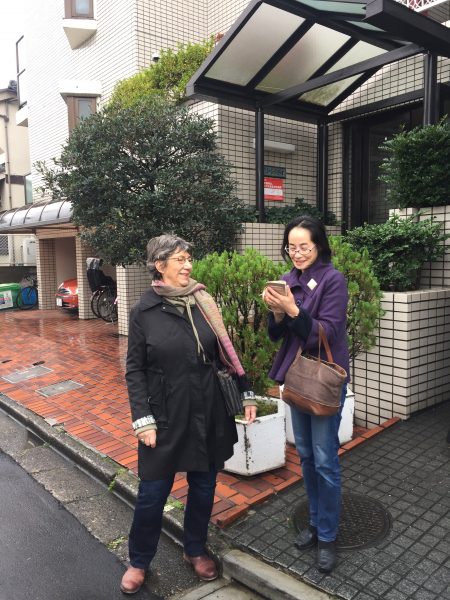
I met up with Maki and Mardy at the station near our place, and we went to see Chie Honma who makes paper in her home (an old guest room right off the entrance). She has the living room set up as a little shop. Take a look at the old drying boards on the left in the photo below.

Chie trained with a living national treasure , but she has two little kids now, so she wasn’t making paper.
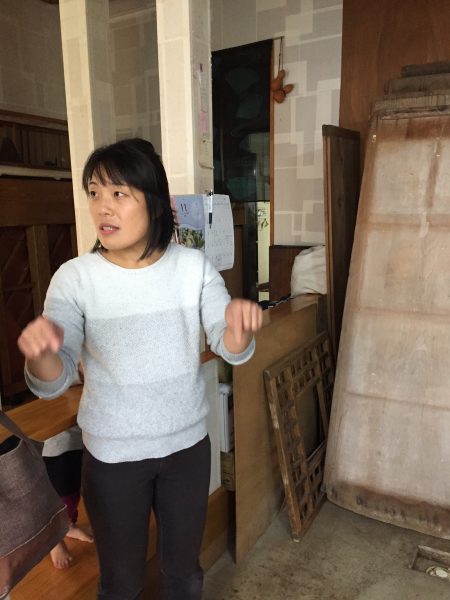
She works mostly with mitsumata fiber.
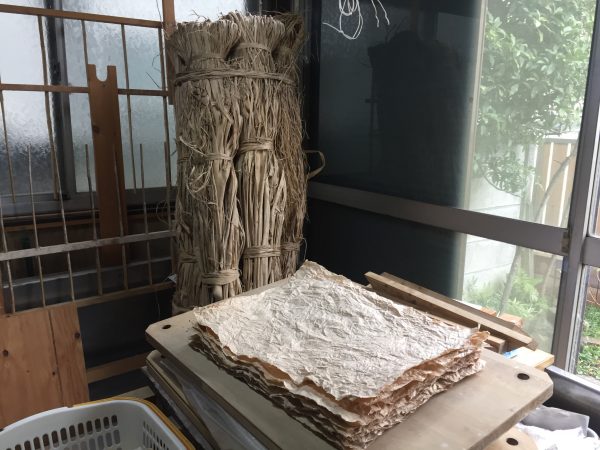
Every inch of that place was filled with papermaking paraphernalia.
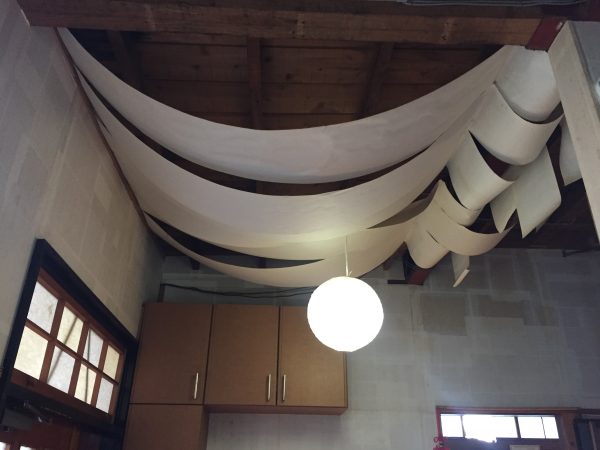

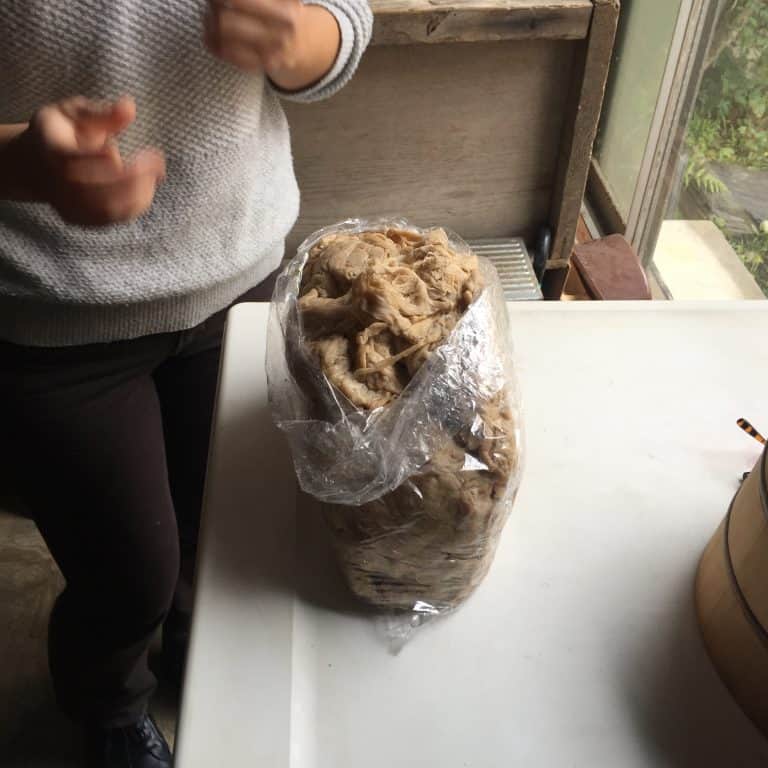

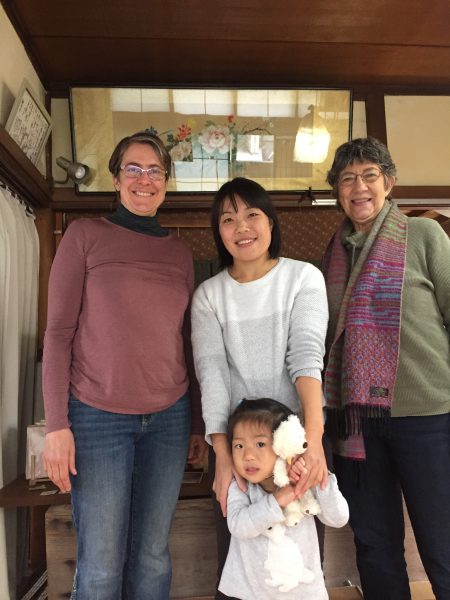
After lunch (tempura), we went to visit artists Richard Flavin and Ryoko Haraguchi. Ryoko creates gorgeous one-of-a-kind textile pieces under the brand Sind, and Richard is a paper artist from the Boston area, who has been living in Japan for 50 years. You might be familiar with him – he did the illustrations for Tim Barrett’s book, Japanese Papermaking. I interviewed Richard for my podcast Paper Talk, stay tuned for the episode (subscribe here).
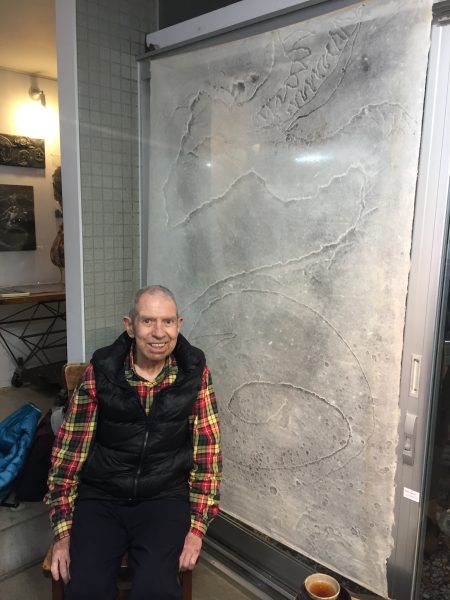
––––––––––––––––––––––––––––––––––––––––––––––––––––––––––––––––––––––––
Thursday, 11/28: Happy Thanksgiving! Ted and I took the shinkansen from Tokyo to Kyoto to our next airbnb, which was inexpensive and bare bones. Our travel took up most of the day, and we were delighted to find a small pastry shop on the corner, along with a street filled with ramen shops that we sampled throughout the week. There was also a sweet little bookstore filled with paper goods, where we attended a guitar concert one evening. These two photos are Ted’s.
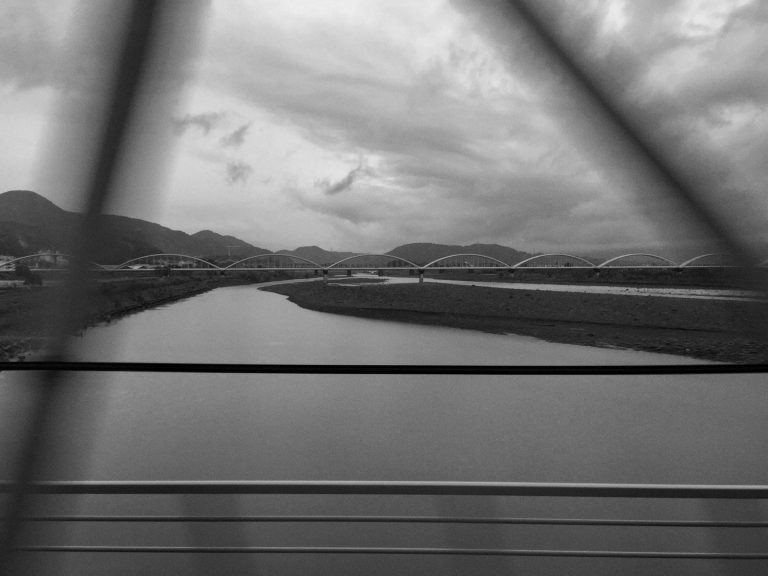
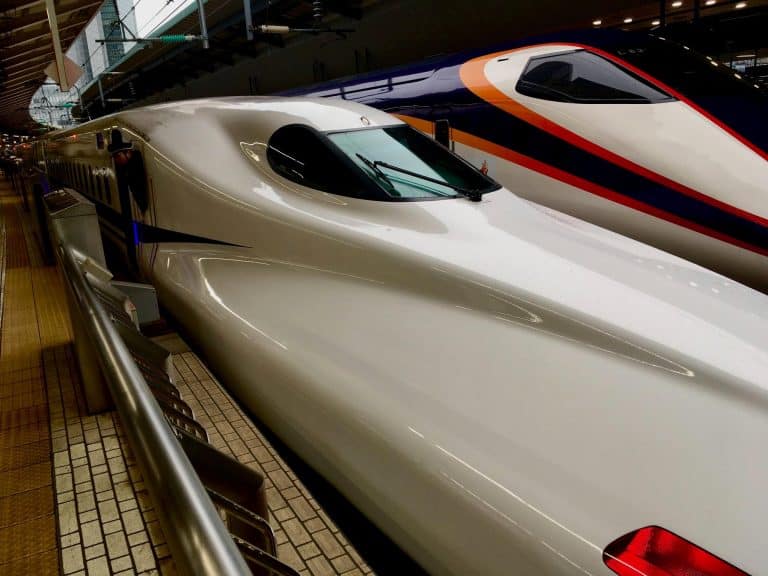
––––––––––––––––––––––––––––––––––––––––––––––––––––––––––––––––––––––––
Friday, 11/29: We walked across town through a park to meet up with Sarah Brayer, a paper artist I met back in the 90’s at Dieu Donné. She has a lovely studio and home, and it was fun getting to know her a bit more. I interviewed her on Paper Talk too. So fun! Check out Sarah’s huge built-in flat files!
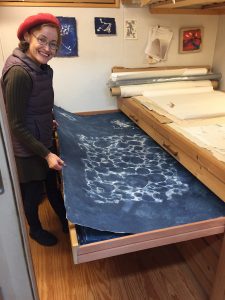
I discovered that Sarah was drawn to the sliding fusuma doors of Japan (and I was drawn to shoji screens). She designed and created these fusuma in her home. There’s a Japanese tatami room behind them!
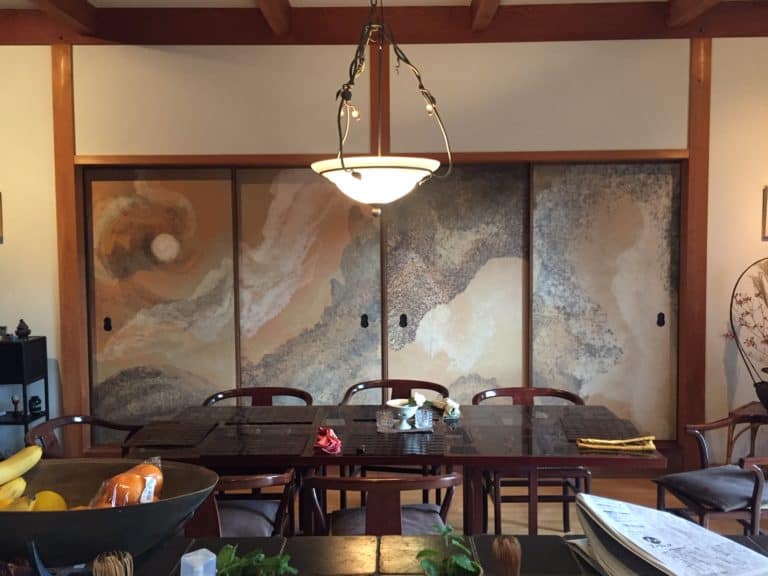
Sarah is currently making work with phosphorescent pigments. They glow in the dark.
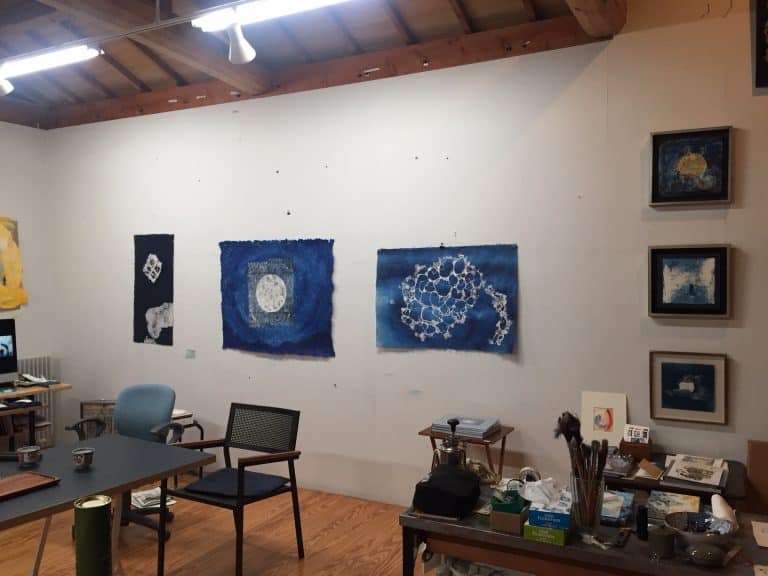
––––––––––––––––––––––––––––––––––––––––––––––––––––––––––––––––––––––––
Saturday, 11/30: Echizen! I knew that Echizen was a place to visit within traveling range of Kyoto. I was leary of booking a tour (who knows what we’d really see) so I held out and it paid off! One day, about a month before our trip, I noticed an Instagram post from a member of IAPMA whom I’ve never met in person. She was posting from Echizen, so I wrote to her and asked if she’d be there when we were coming. The first miracle was that she saw my message (you know how that can go) and the second was that she introduced me to Nicholas Cladis, an American who has lived in Echizen for the past six years, helps run a residency program, and is passionate about sharing the paper love. We took the train 1-1/2 hours to Tafeku, where Nicholas Cladis picked us up at the station. We visited 6 papermaking workshops + the place where Nicholas makes paper – he let us each pour a sheet! The curator of the paper museum, Tomoe, also joined us for the day, which included lunch at a soba noodle house.
Our first stop was at Osada Kazuya, who makes paper for fusuma panels, and many other things. He had a small shop at his place. Here you see a sliding door panel with shapes that he draws with cooked fiber and then paints pulp into. It was hard to keep track of who used what as their pulp source, but we saw Thai kozo, Japanese kozo (from Nara prefecture) and cotton pulp throughout the day.
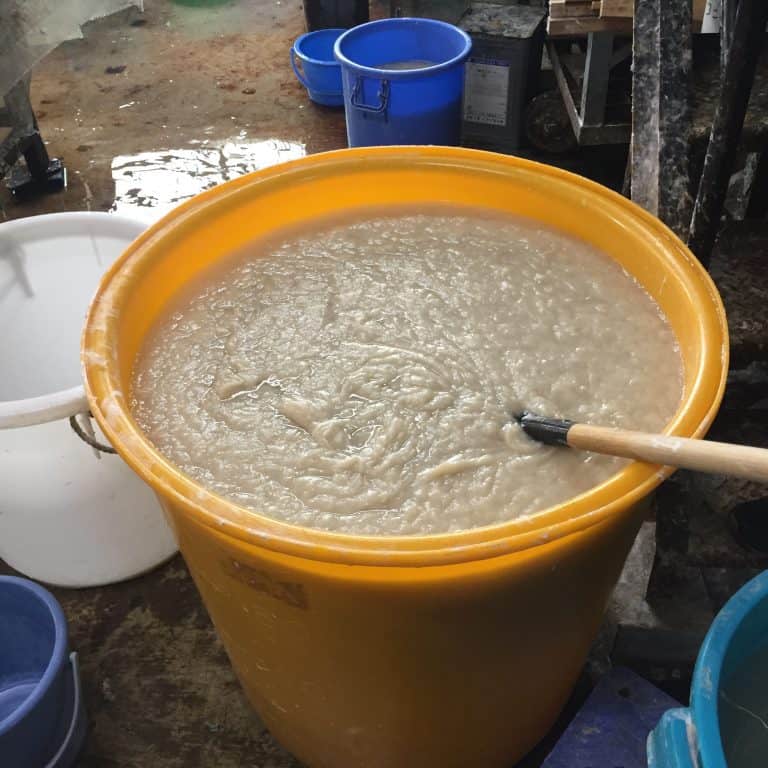
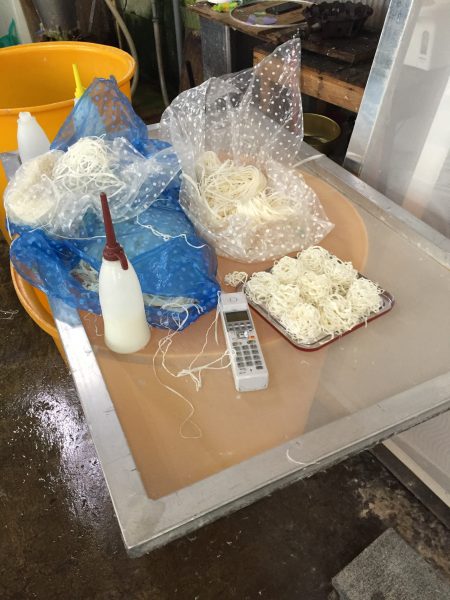
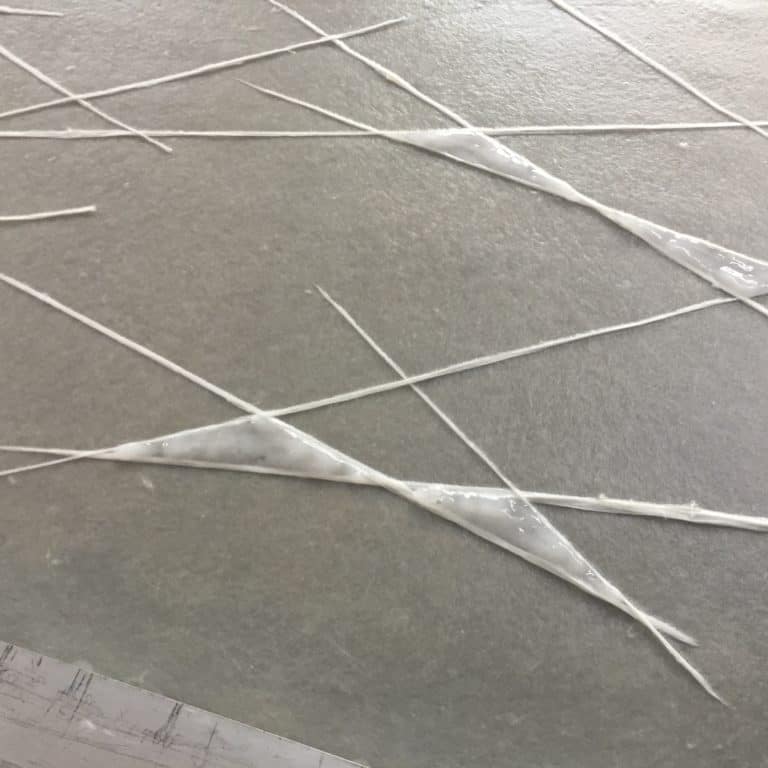
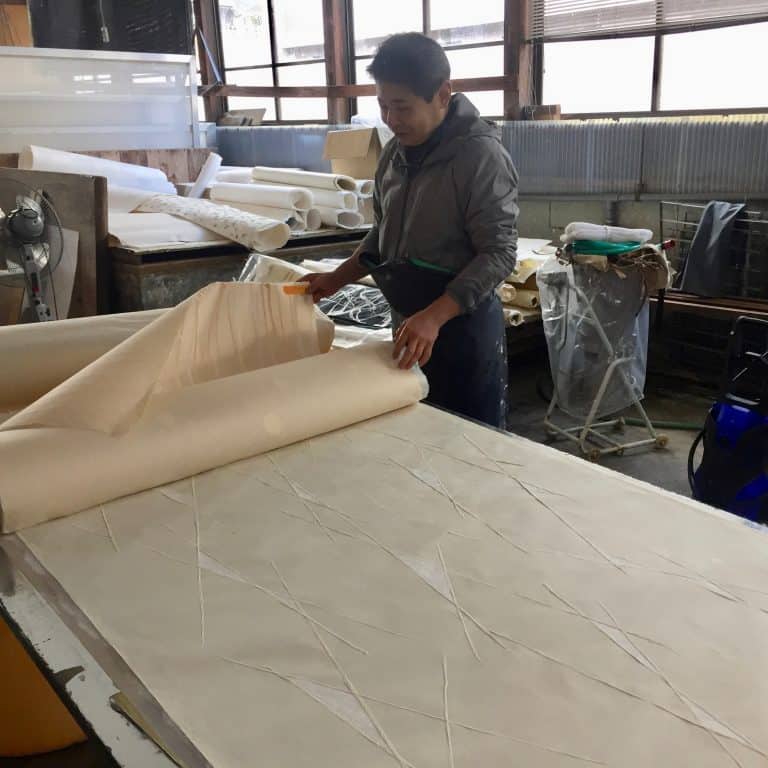
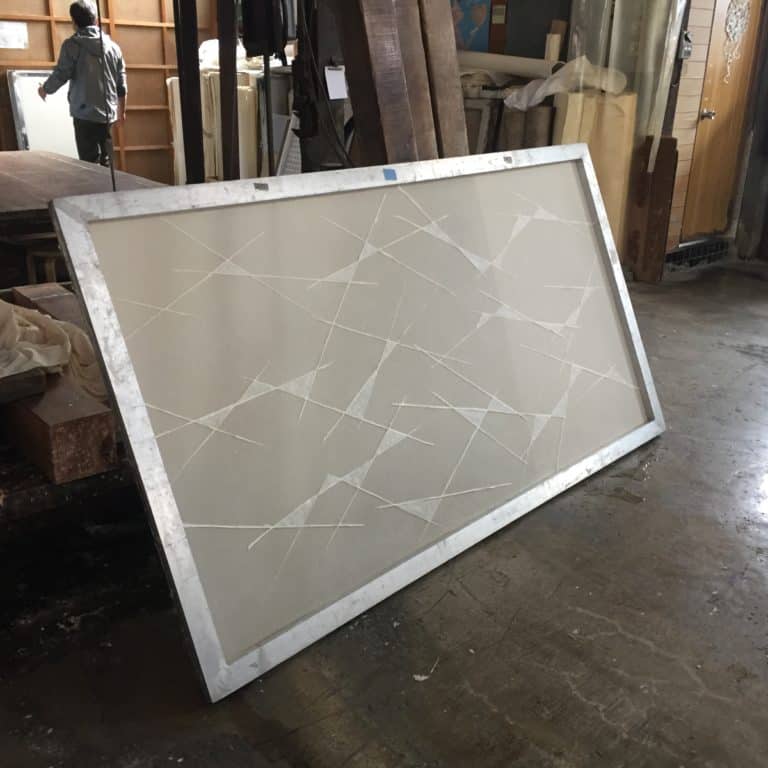
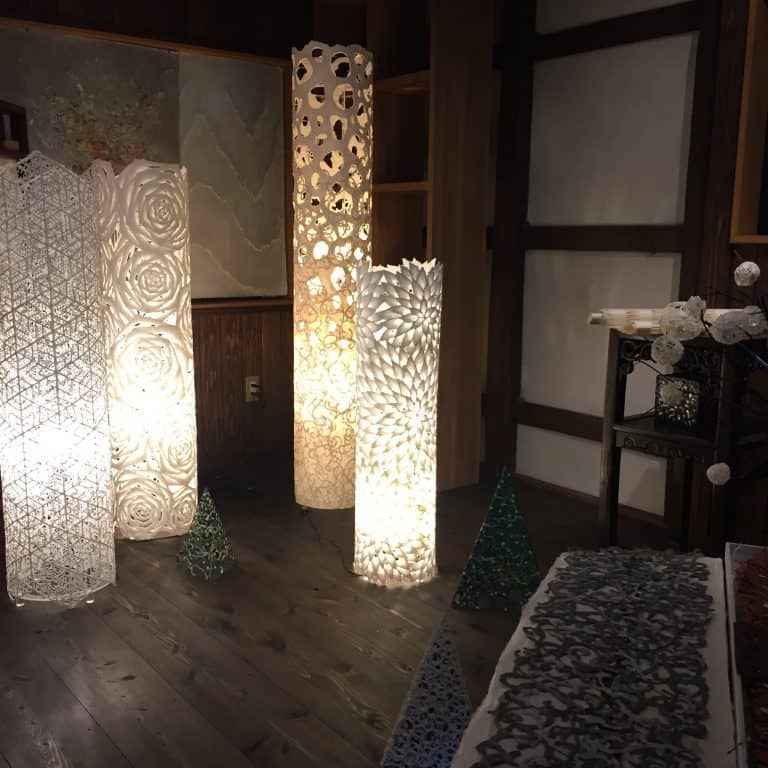
We visited living national treasure Ichibei Iwano next. He’s been making paper for 70+ years.

Here he is picking the bits of bark off of kozo fiber.
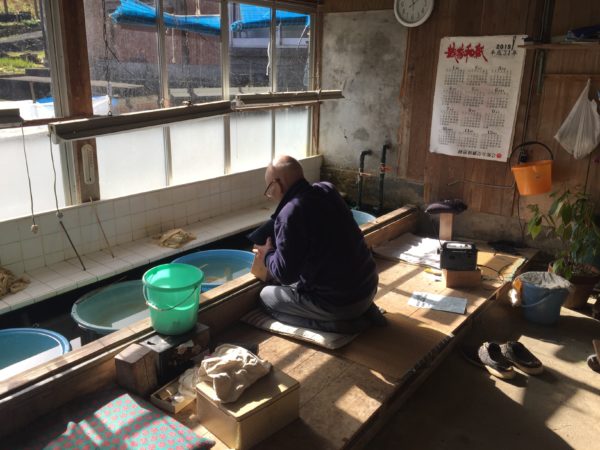
Here’s the naginata beater.

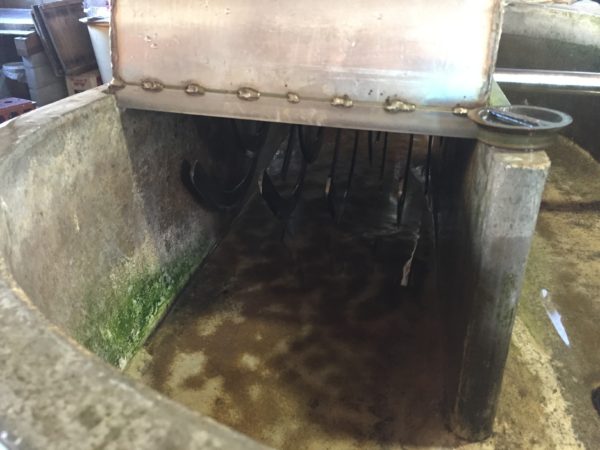
This is the tororo aoi root that creates the viscous substance that makes Japanese papermaking possible.
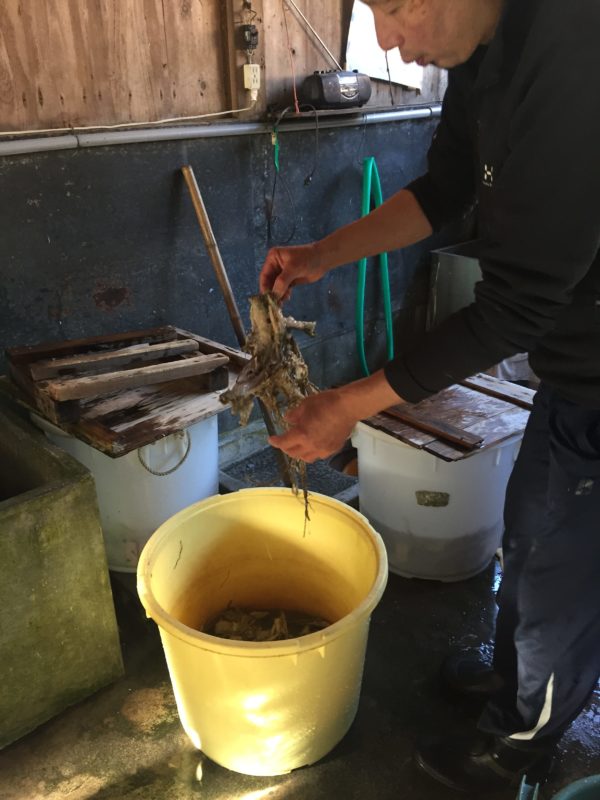
Ichibei Iwano raved about the long fibers of his paper.
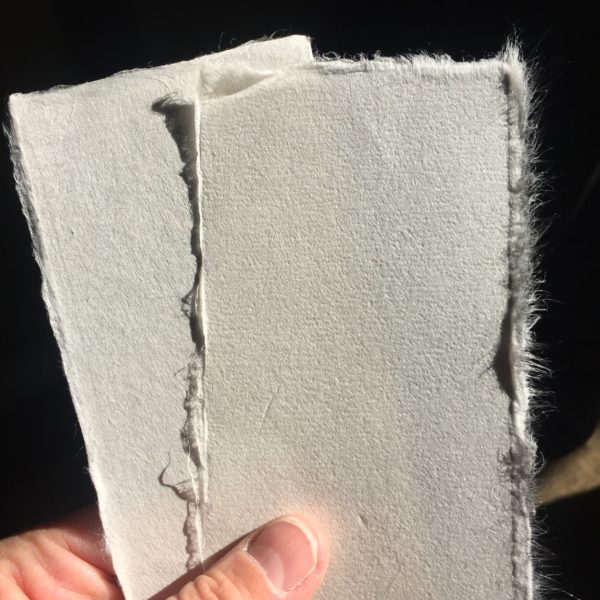
Legend has it that more than 1,500 years ago, a woman felt sorry for the people of the region, who were struggling to make a living growing rice, and gave them the art of making washi paper. She then disappeared into the river and was named “Upriver Goddess”. A small statue of her lives in the mountains above Echizen, and each year the people process up carrying lanterns, bring her to the Okamoto Otaki shrine, where she is worshiped, and then take her back home.

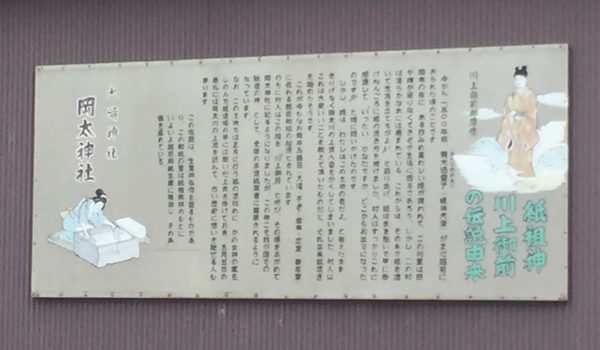
Next we visited Yamaguchi Shohachi workshop, where we saw him picking the bark and her making paper. Notice the chest support he’s rigged up for comfort when picking bark. Here’s a video:
At the Igarashi Masami workshop, they were making large sheets!
We walked over to another building where this really huge sheet of paper was drying on the frame. It was created to become a wall piece in a restaurant in Osaka. We were told that workers had to climb up and work above the piece (which was about 10′ wide and much longer) to create the imagery.
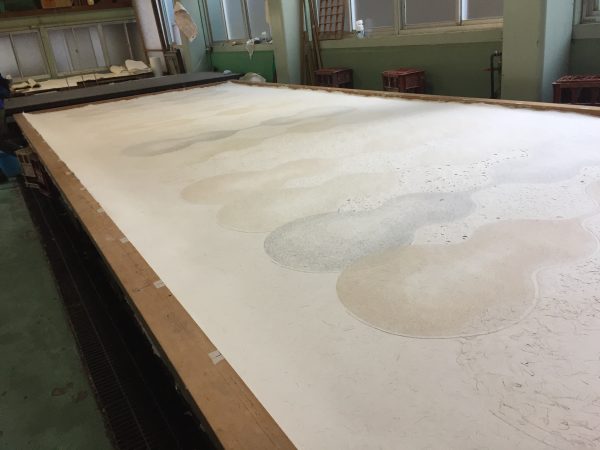
Studio Ryoso Yanase was interesting because they had this conveyor belt couching/drying system. I didn’t get a good photo of it in action, but hopefully you’ll get the idea.
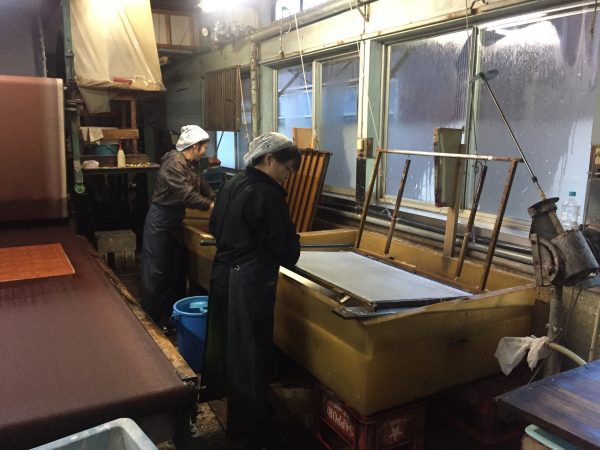
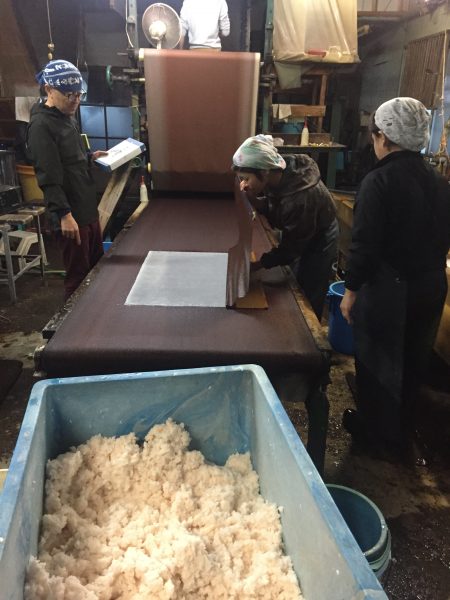
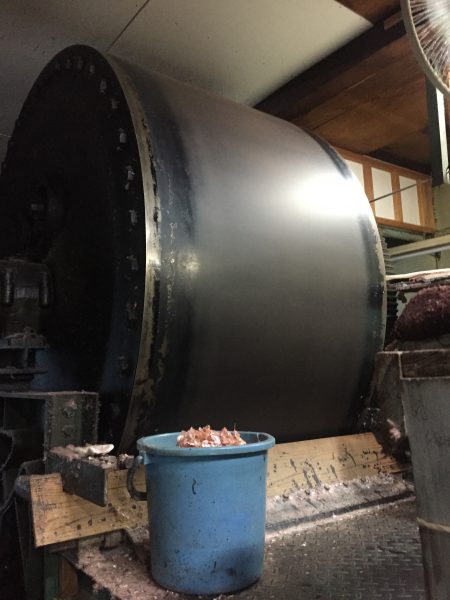
You can just see the sheet of paper coming around on the roll here, which this woman will pull off.
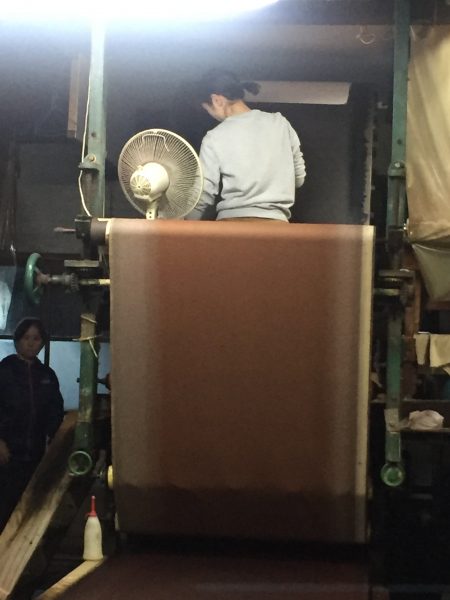
We wrapped up the day making a few sheets of poured paper at Nicholas’ workshop. Check out this pulping machine.
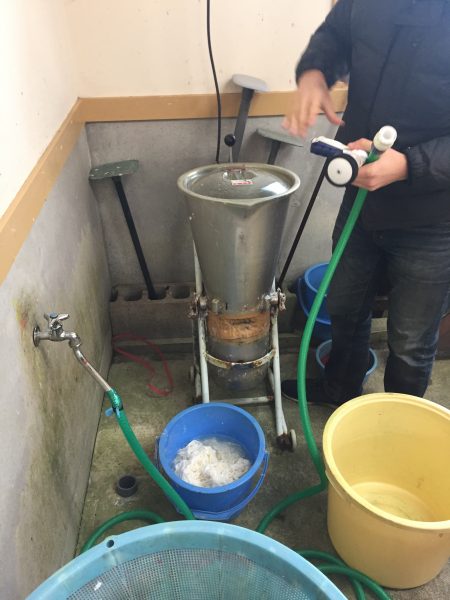
This is one of the forms of Thai kozo that is available in Japan – bleached and cooked – and affordable for teaching purposes.
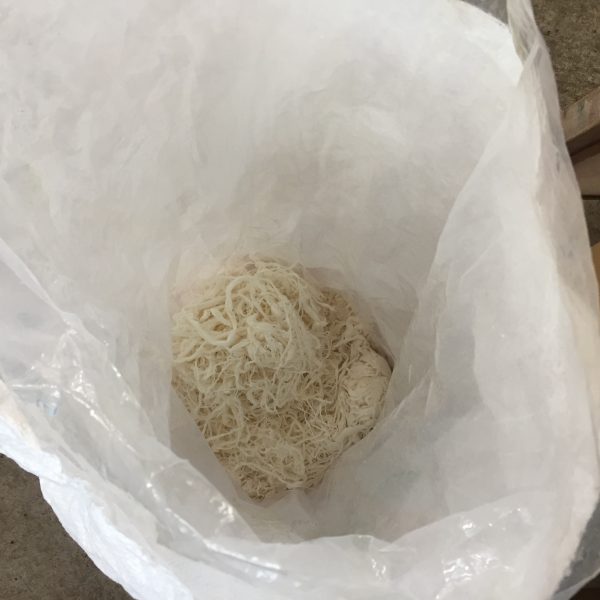
Ted, Nicholas and I each poured a sheet.
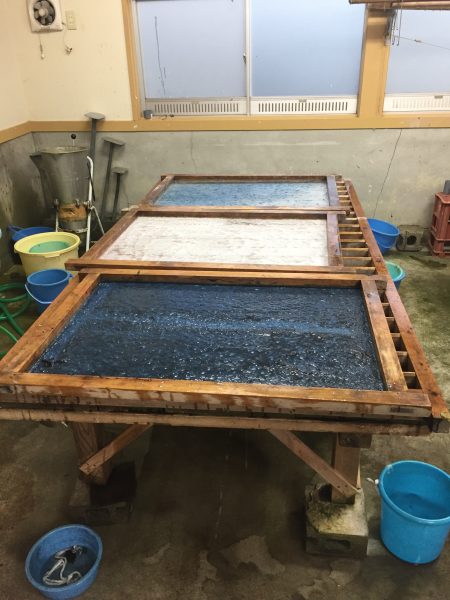
The day ended with a potluck for the staff of Imadate Art Field, a non profits arts organization that arranges residencies and annual paper art exhibitions (good timing for us). It was a lovely gathering with amazing food! Tomoe, who joined us for our day-long adventure, is sitting next to Ted.
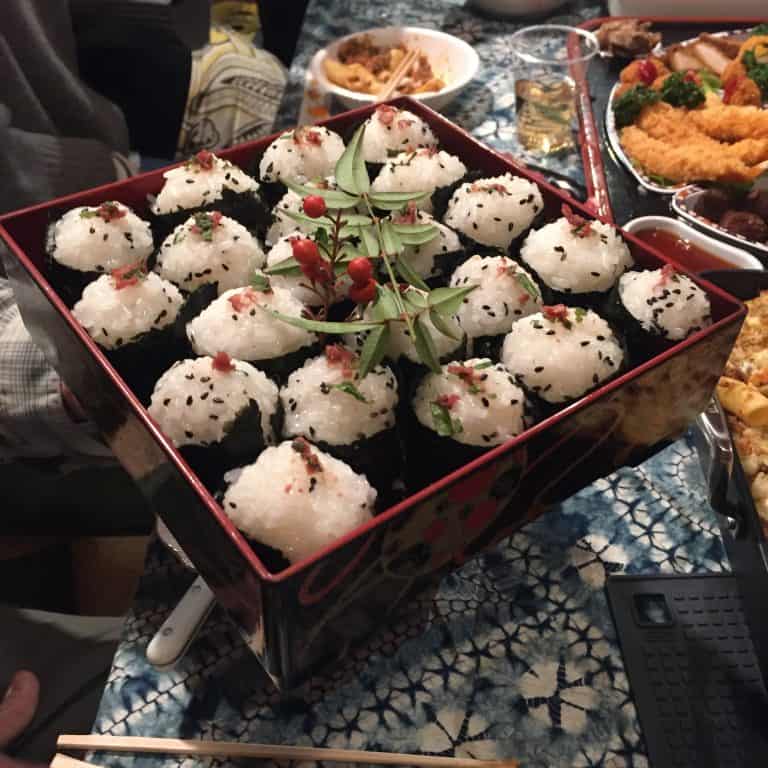

Here we are in front of the train station, about to head home as we wrapped up week one of our Japan adventure.
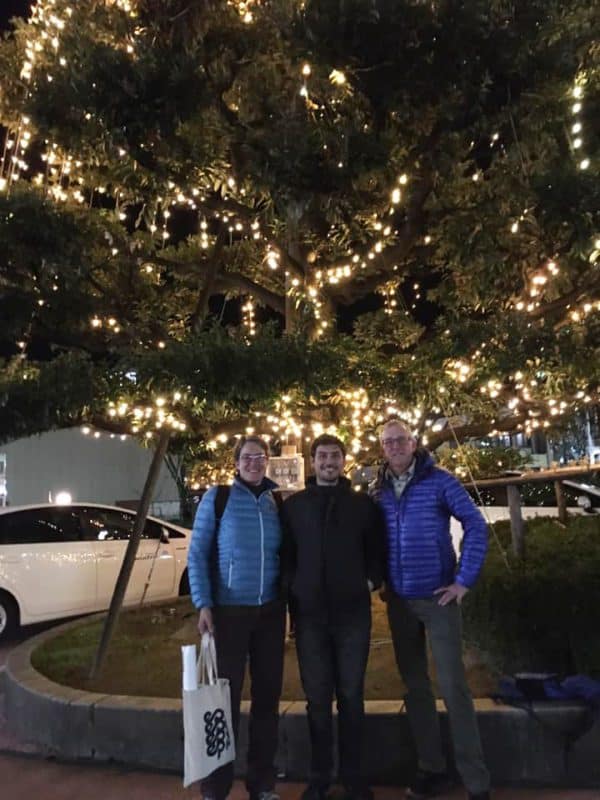
Here’s a link to Japan Trip – Part 2.
Guess what? I am seriously considering bringing a group to Japan in 2021. I think I’ve found a partner on the ground there who speaks Japanese. Please leave a comment if you think you might be interested (please include your e-mail address, because it won’t show up with your comment). I am envisioning a trip that would combine visiting paper places and creating Japanese-inspired paper objects. In the meantime, I hope to attend the IAPMA Congress in Japan next fall.
And I know you see this every week on my blog, and you probably don’t even look at it anymore, but these two posts about Japan took me over 10 hours to compile (without compensation). I am by no menas complaining – I feel so lucky to have found a true passion – and I do so love and enjoy what I do! But here’s a fact: my hubby (the writer and editor) gets $1-$2 per word when he writes a magazine article.

And feel free to SHARE THIS blog post with your paper- and Japan-loving friends!

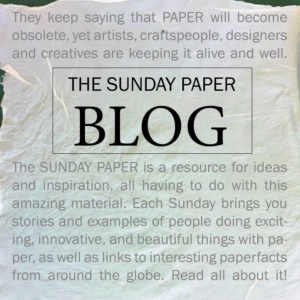
19 Comments
Beautiful images
I would love to know what you brought home besides paper. Like the root used to condition paper pulp or persimmon used to make paper waterproof?
Teri, I will post some pics of the papers in Part 2. I did purchase some kakishibu (persimmon juice), and a things made of paper (wallets, etc). My husband got Japanese plum wine + sake.
How wonderful that you were able to make this trip! Thank you for sharing the wonderful photos – they make me wish I could go to Japan, too.
Helen! I think this is my favorite Sunday Paper yet. Thank you! F
Many thanks for making time to share these experiences with words and great photos. It’s a virtual tour for those of us who won’t get to visit Japan in person. Will look at this post again and again. Inspiring! Snow falling in northen MN…
How wonderful to visit Japan again through the eyes of a paper maker. Like your son, I was also a college student abroad at Kansai Gaidai, many moons ago, in 1977. Thanks for sharing this wonderful adventure.
What a wonderful vicarious tour. You did so much in such a short time, but wrote and photographed each part beautifully. I can’t imagine a 10 floor store devoted to paper. And the lamps in the restaurants-nothing like them. Recently I saw a picture of a Japanese firefighter’s jacket made of paper. It must be that Japanese paper is a truly unique thing-not our idea of paper, nor of fabric; but a different invention entirely.
Lucky you! Thank you for sharing.
Helen – what an amazing, incredible, inspiring trip of a lifetime that is a perfect culmination of your life’s work. So enjoyable to read and firmed up my desire to visit Japan one day. Sarah’s Fusuma screens and the pierced paper floor lamps were astoundingly beautiful – my heart went .. ooooh.
Sooooo fabulous!!! You are sooo fortunate!!! I can’t wait to see part 2. Thank you sooo much for posting!!!
[…] Japan 2019 – Part 1 […]
Hi helen,
I might be interested in your Japan trip in 2021, Suzanne
I saw this on Daria Wilber’s Facebook feed. This is my dream tour of Japan! If you do a trip in 2021, I would love to go. I do origami and speak fluent Japanese – I lived in Yokohama for a year, have visited Japan several times, and used to teach Japanese.
Sarah, please send me your e-mail address so that I can add you to my list. Thank you!
[…] Have you read the recap of my Japan trip? […]
Hi, Helen – I would be very interested in a trip to Japan with you in 2021. I thought I’d go to the IAPMA conference this coming year, but really can’t face it after hardly having been home at all this year!
[…] Click here for Part 1 – the first week of her trip. […]
Sounds like a wonderful trip! Thanks for writing and posting all the images. I might be interested in joining you on the 2012 paper tour. Please keep me posted. Thanks!